No products in the cart.


Classical mechanics is built upon Sir Isaac Newton’s Laws of Motion, which he first proposed in the 17th century. These laws are not merely academic; they also explain a lot of the everyday events that occur around us. We learn about them in textbooks.
This blog will examine practical applications of Newton’s First, Second, and Third Laws in ways that are easy to understand, applicable to everyday life, and pertinent to contemporary technology.
“An object at rest stays at rest, and an object in motion stays in motion unless acted upon by an external force.”
Real-Life Applications:
When a car stops suddenly, the passengers sitting in it lean forward. This happens because the body wants to maintain its state of motion (inertia). The seat belt stops the body by applying an external force and prevents an accident.
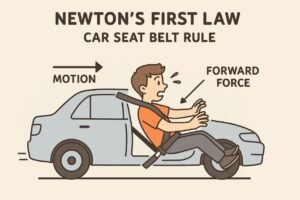
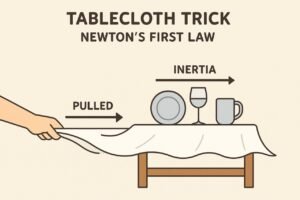
2. Table-cloth trick:
If the table-cloth is pulled very fast from under the utensils kept on the table, the utensils remain in their place. This happens because the utensils resist change in motion – i.e. they remain stationary due to inertia.
3. Standing in a moving bus:
When the bus stops suddenly or starts moving, the standing person loses his balance. This happens because the body wants to maintain its earlier state of motion – this is inertia.
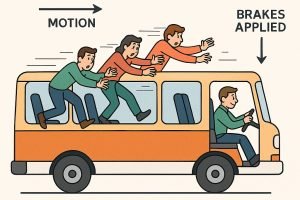
The force applied on an object equals the mass of the object multiplied by its acceleration.
Real-Life Applications:
When a football is hit hard it moves faster because more force is applied to it. According to Newton’s second law of motion, the ball’s acceleration is directly proportional to the force applied to it and inversely proportional to its mass.
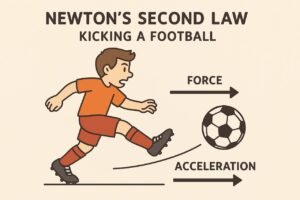
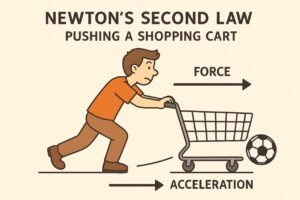
2. Pushing a Shopping Cart:
An empty cart is easier to push than a heavy cart because it weighs less. According to Newton’s second law of motion (F = ma), the greater the mass, the greater the force required to achieve the same acceleration. This is why it takes many times more effort to push a heavy cart than an empty cart.applied to it and inversely proportional to its mass.
3. Rocket Launches:
Rockets require a great deal of force to take off from Earth because they are very heavy and have to resist the Earth’s strong gravitational pull. Rocket engines burn fuel and expel hot gases downward at high speed. According to Newton’s third law of motion, these gases exert an equal force in the upward direction, which is called “thrust”. This powerful thrust lifts the rocket into the sky and helps it travel into space.
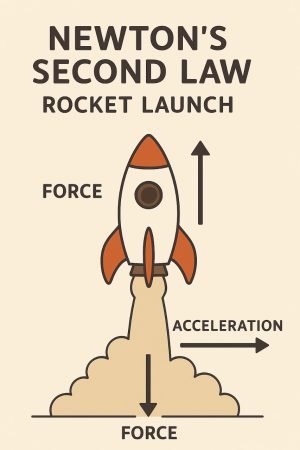
For every action, there is an equal and opposite reaction.
Real-Life Applications:
1. Jumping Off a Boat:
The action force is your legs pushing against the boat in the opposite direction when you jump forward off a boat. Newton’s Third Law of Motion states that there is an equal and opposite reaction to every action. Consequently, you travel forward through the air while the boat moves backward.
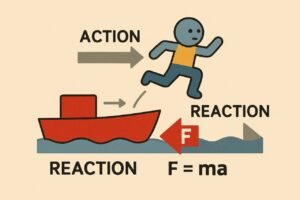
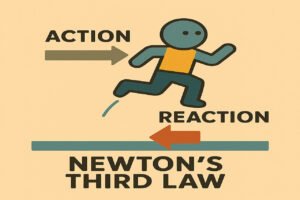
2. Walking:
When you walk, your foot pushes the ground backwards with a force — this is action. According to Newton’s third law of motion, the ground also exerts an equal but opposite force on you — this is reaction. This forward pushing force is what propels you forward with each step. If this reaction force from the ground were not met, you would not be able to move forward.
Newton laws of motion are not just for scientists—they explain how almost everything moves and interacts in our world. From transportation and sports to technology and safety equipment, these laws are the invisible forces shaping everyday experiences.
You can give free quies without longin in 4st chapter of 11th class course of these website.
Tags:
Not a member yet? Register now
Are you a member? Login now